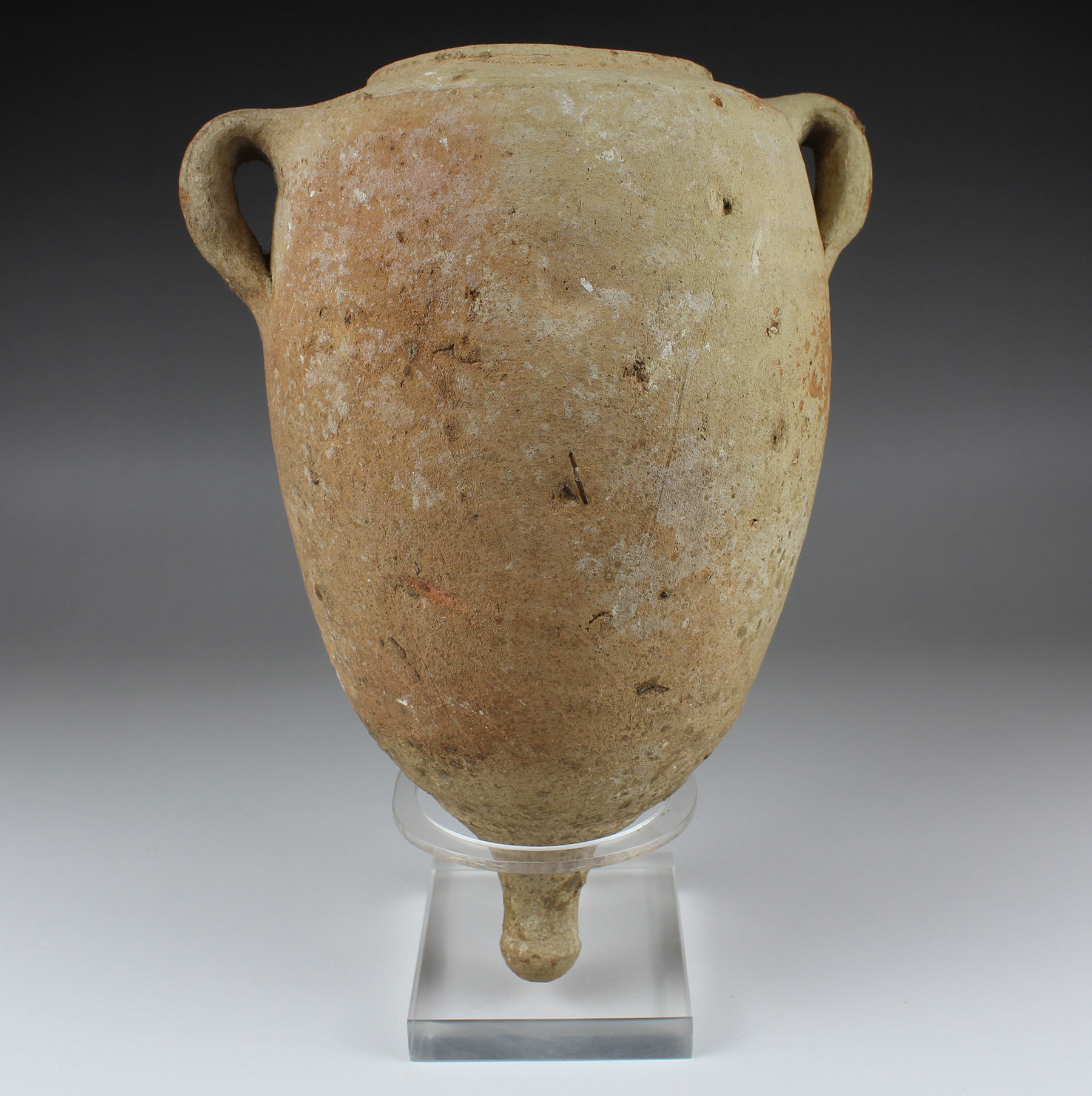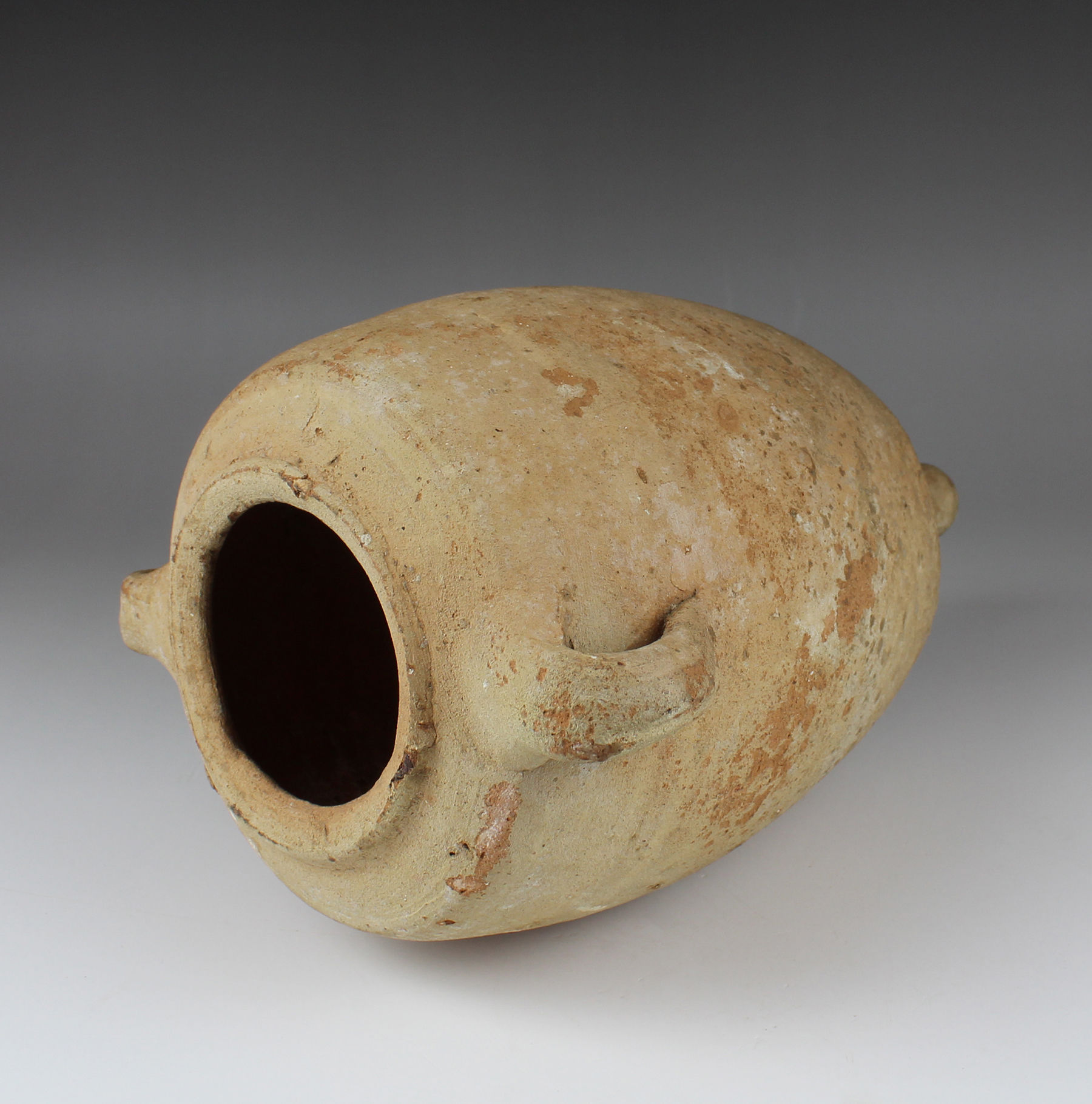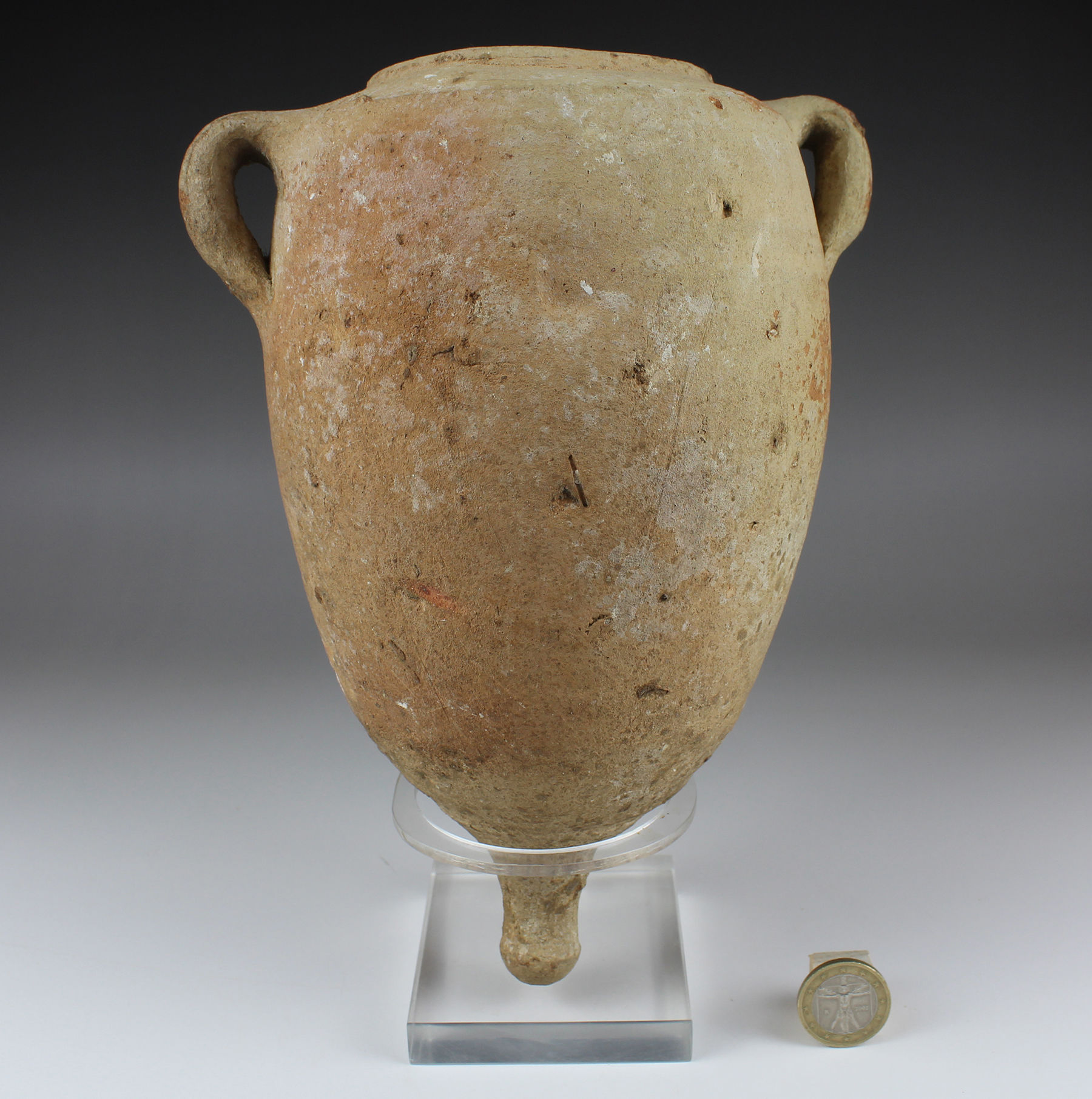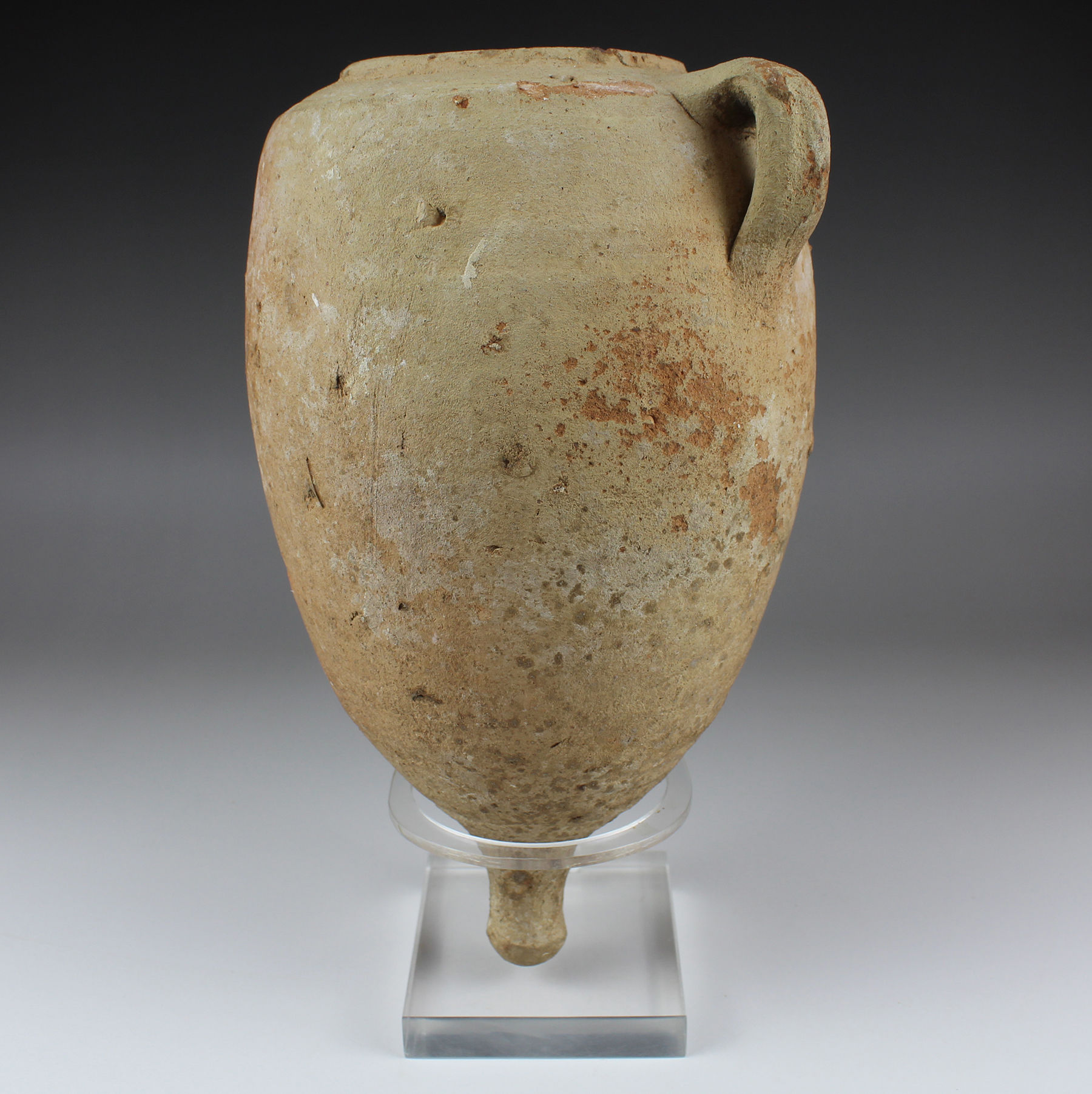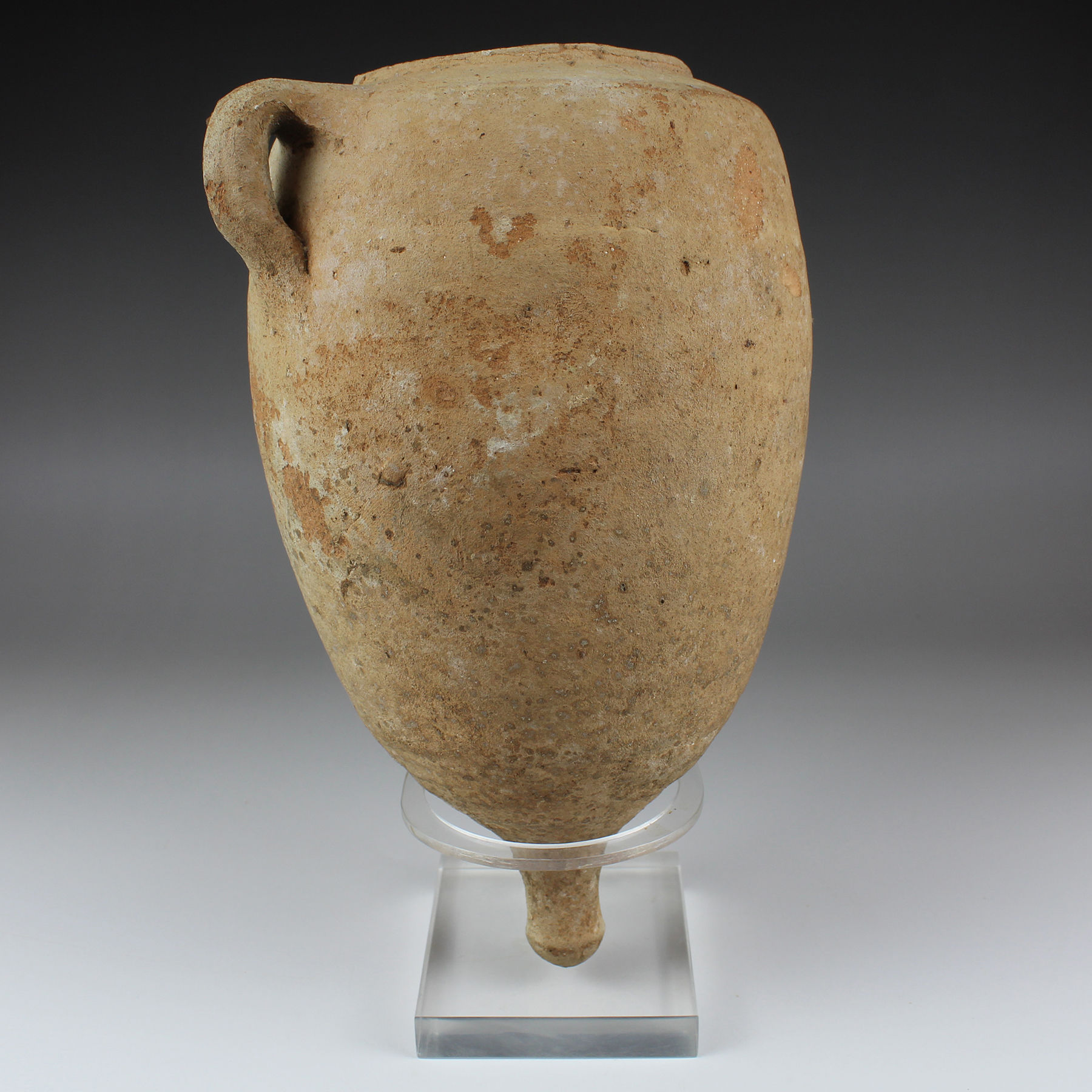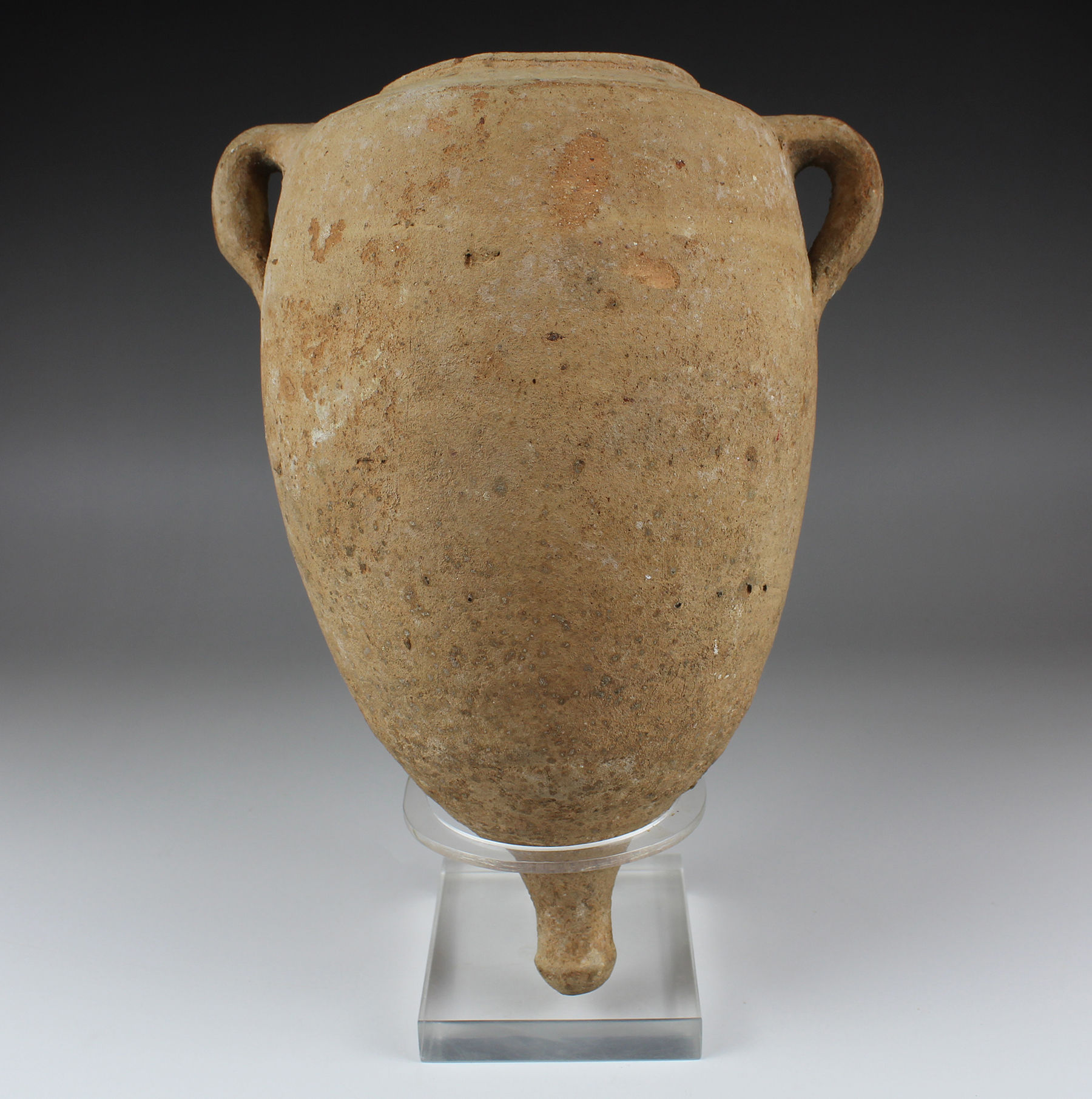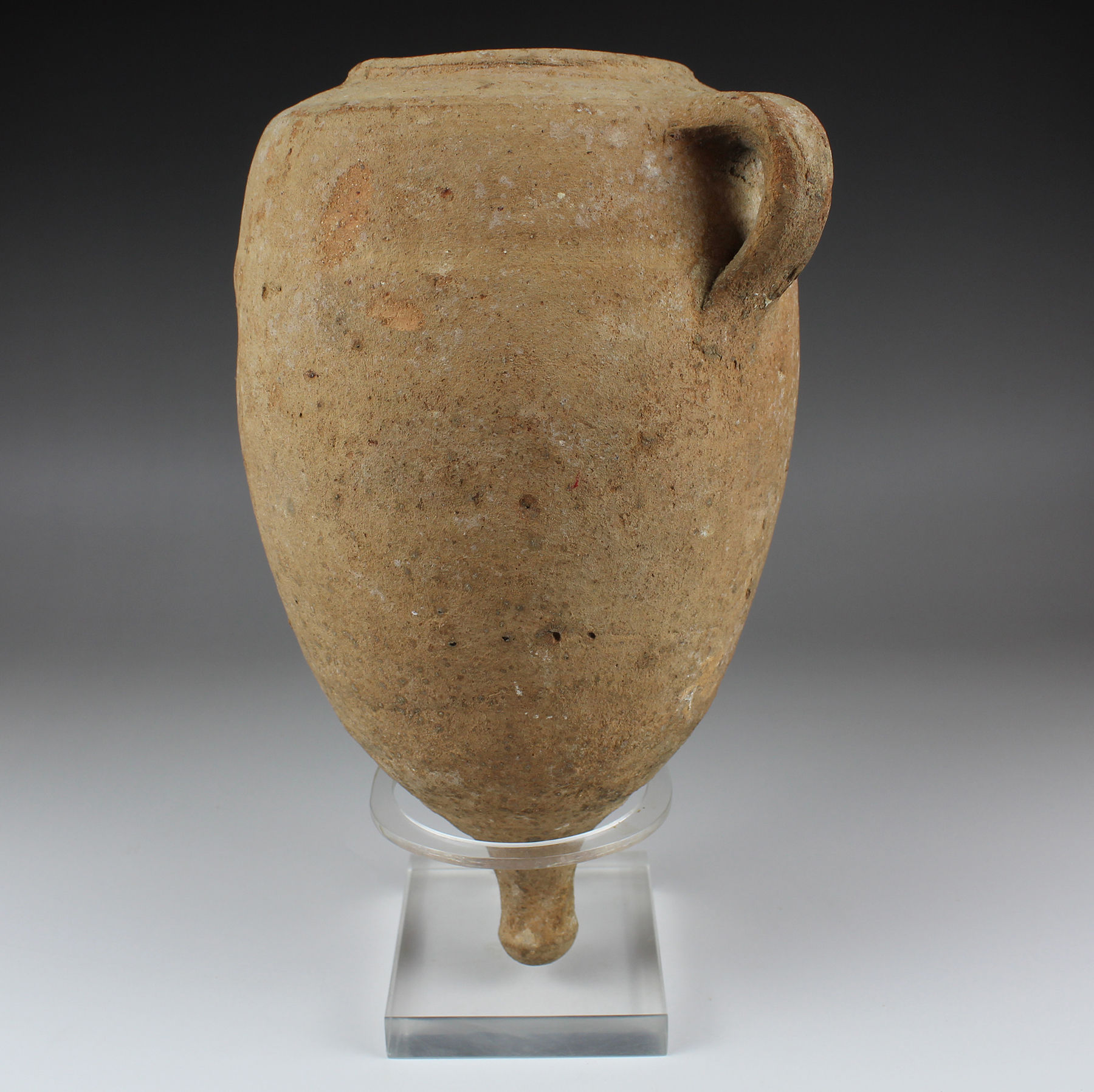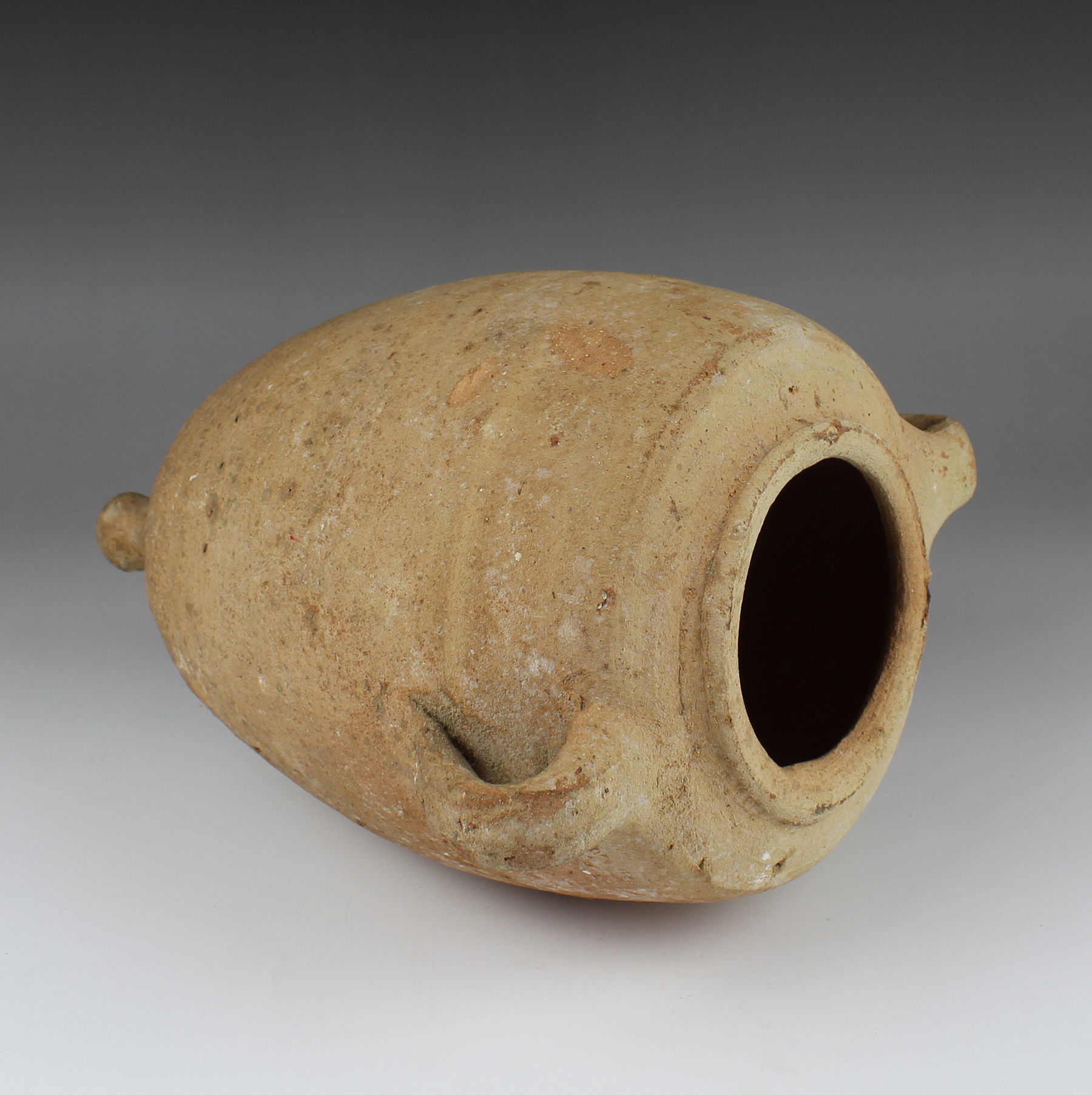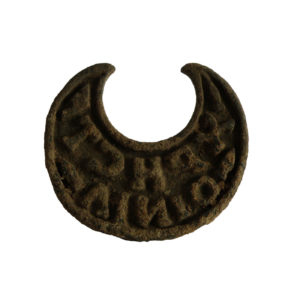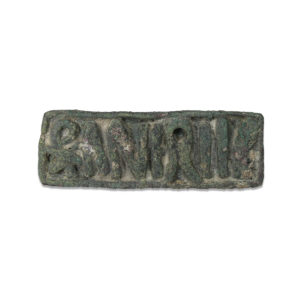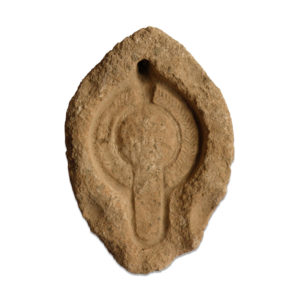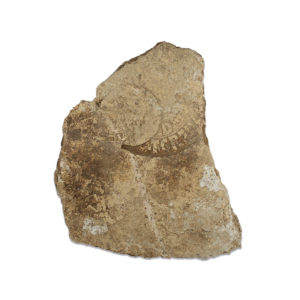Description
| ITEM | Amphora |
| MATERIAL | Terracotta |
| CULTURE | Roman, Tunisia |
| PERIOD | 1st Century A.D |
| DIMENSIONS | 220 mm x 165 mm |
| CONDITION | Good condition |
| PROVENANCE | Ex Marius-Victor-Ernest Dumas private collection (North Africa and France), acquired in Tunisia between 1890 – 1920. M. Dumas was Controleur Civile (French colonial administrator) of the city of Sousse in Tunisia prior to World War I. This collection of Roman and North African antiquities has remained in the family for the past 100 years in the Haute-Savoie region of France. |
Used as a storage jar and one of the principal vessel shapes in Greek pottery, a two-handled pot with a neck narrower than the body. There are two types of amphora: the neck amphora, in which the neck meets the body at a sharp angle; and the one-piece amphora, in which the neck and body form a continuous curve. The first is common from the Geometric period (c. 900 BC) to the decline of Greek pottery; the second appeared in the 7th century BC.
Roman amphorae are containers used for storing and transporting foodstuffs such as wine, olive oil, salted fish, garum, cereals, grapes, olives or honey. Sometimes they were also used for other products such as perfumes. They come in various sizes and their shape varies according to the period and the goods they contain. However, the common features are the two handles and the foot or pivot. The strong handles are the ideal suspension for carrying. The foot or pivot is the rounded or pointed, solid bottom, to facilitate stowage on ships, stacking them on several levels, and as an aid for sticking them in the sand on the beach.


